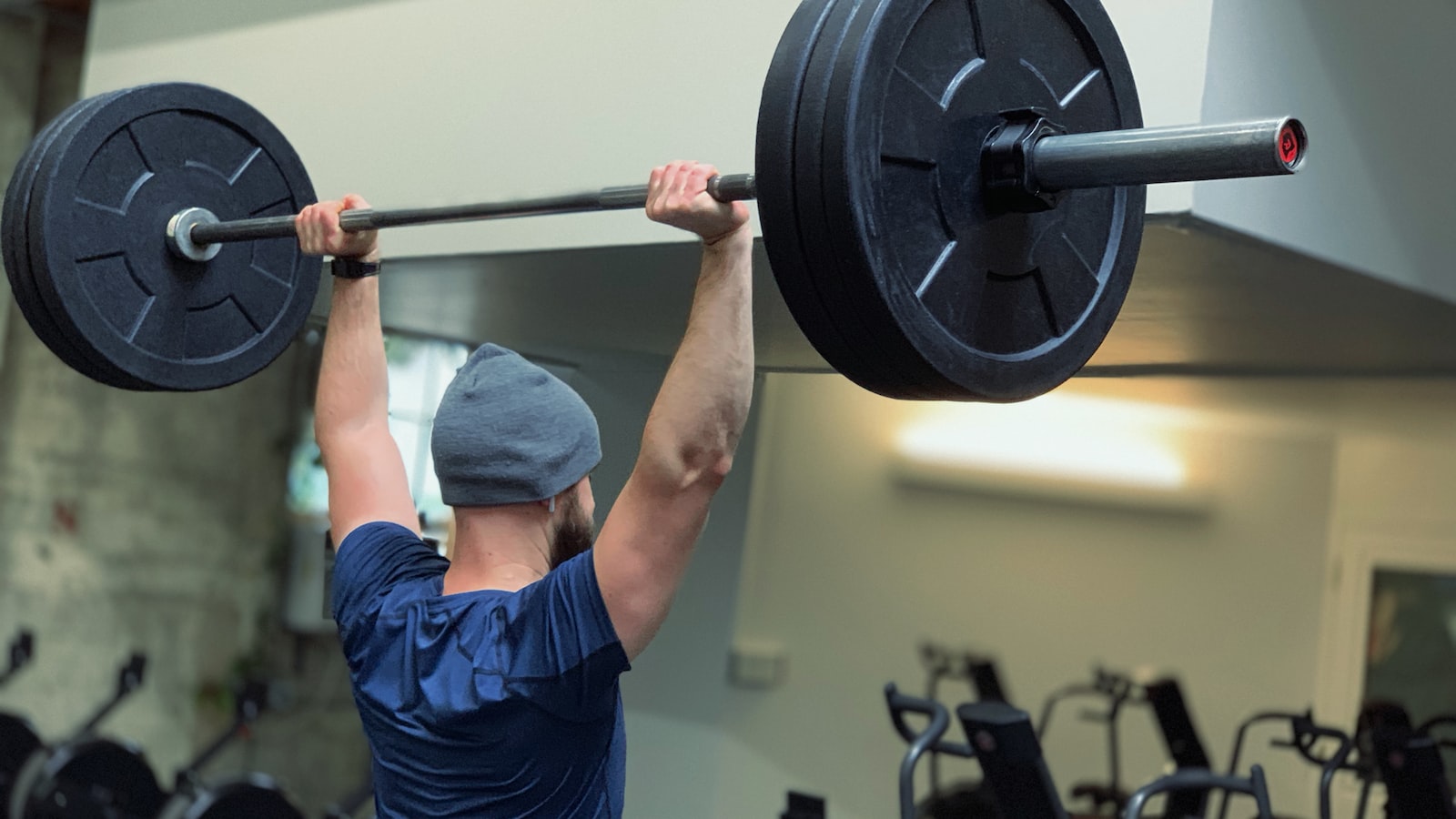
Walking: Your Go-To Fitness Component!
Hello everyone. If you’re looking to get into shape, you’re probably asking yourself what type of fitness activity you should get into. Well, look no further: walking is here to save the day! Walking is one of the simplest and most easily accessible forms of exercise, and it’s an amazing way to improve your overall health and wellbeing. In this article, we’ll explore why walking is such a fantastic way to exercise, and provide tips to help you make the most of your walking routine. So get ready to hit the pavement, because walking may just be your go-to fitness component!
List of Content
- 1. Introduction to Walking as a Fitness Component
- 2. Benefits of Walking for Fitness
- 3. Where and When to Walk for Fitness
- 4. Choosing the Right Equipment for Walking Fitness
- 5. Stretching Exercises to Enhance Walking Fitness
- 6. Take Your Walking Fitness to the Next Level
- You Ask, I answer

1. Introduction to Walking as a Fitness Component
Walking is one of the easiest and most efficient ways to keep fit. As an activity, it’s low-impact, so it doesn’t put any extra strain on your joints. It’s also accessible, as you can do it almost anywhere, whenever you feel like it.
Walking for fitness provides a range of health benefits. It strengthens your heart and lungs, aids digestion, boosts your immune system, strengthens your bones and muscles, helps to reduce stress, and lowers your risk of diseases, such as obesity, type 2 diabetes, heart disease, and cancer.
Before starting any walking routine, it’s important to consult with a doctor. When you have the doctor’s go-ahead, it is advised to build up gradually from shorter distances. Begin by walking for just 15-20 minutes 3 times per week. As your fitness level increases, you can increase the length of your walk and the number of times you’re doing it.
Equipment For Walking
- Comfortable clothing and footwear.
- A hydration system, such as a water bottle.
- A hat, sunglasses, and sunscreen.
- A pedometer or fitness watch, if you want to monitor your progress.

2. Benefits of Walking for Fitness
- Calorie burn
Walking provides a moderate-intensity aerobic workout by burning calories. The exact number you burn on a walk depends on your size, the path you take, the terrain, the effort you put in, and the speed you walk. As a general estimate, you can burn roughly 100 calories per mile of walking. - Lower blood sugar
Physical activity has been linked to decreased risk of diabetes. Walking can help lower blood sugar and control insulin levels, which is especially beneficial for people with prediabetes, metabolic syndrome, or type 2 diabetes. - Reduction in stress
Walking can be very calming and is an excellent way to help reduce stress. In particular, a quick walk may help you relax and enjoy the natural surroundings of the outdoors. - Increased energy levels
One of the benefits of walking is increased energy, which is beneficial for people who feel tired or don’t have enough energy throughout the day. Walking can help boost your energy levels and improve your overall wellbeing.
3. Where and When to Walk for Fitness
Finding a time and space to get in a regular walk is an essential part of any fitness plan. And don’t worry, it doesn’t have to be complicated or strenuous. Here are some tips for making every walk count:
- Choose a scenic spot: If possible, pick out an area with nice scenery. Seeing natural beauty like lakes, mountains, or parks along the way can help provide a more pleasant, calming atmosphere.
- Look for safe places to walk: You want to make sure you’re walking in a safe place. Look for routes with sidewalks, or locate flat surfaces with less traffic.
- Pick a time and stick with it: To make sure the walk gets done, schedule a specific time each day and stick to it. Consider doing it at the same time or day every week, so it becomes a regular habit.
Try to pick a walk time that works around your other activities and routines. Just remember that good days for walking are the days when it happens. Walking in the morning can be a great way to wake up your metabolism and strengthen your legs and core, while an evening walk can be a great time to unwind and reconnect with your body.
If you can’t get outdoors to walk around, try bouncing around with a rebounder or treadmill. Even just 20 minutes of walking with a high level of intensity like this will boost your metabolism and boost your muscles. Building in short bouts of more intense walking can also be a great way to add variation to your regular walking routine.
4. Choosing the Right Equipment for Walking Fitness
When walking as a fitness activity it is important to select the right equipment to ensure a comfortable and safe experience. Investing in the right shoes, backpack and other exactly items can make all the difference in your progress and well-being.
The shoes you choose for walking fitness should be comfortable and well-cushioned. It is also important that the shoes offer excellent grip and provide the right level of arch support. Investing in quality, well-built shoes can take your walking sessions to the next level and will extend the life of your shoes.
A lightweight backpack can also be a great asset when you practice walking fitness. Apart from providing you with added comfort, a backpack lets you store items such as a water bottle, protein snacks or maps easily.
Other items that may come in handy include a hat to protect you from the sun, sunglasses to make your walks more comfortable and poles to add an extra level of support and balance. Depending on the weather, you may also need to invest in a coat or a windbreaker:
- Lightweight, breathable running jacket
- Windbreaker or Raincoat
- High-visibility im bro llusion
Finally, consider carrying a first-aid kit and emergency whistles with you in case of an emergency. With the right gear, you’re sure to make the most out of your walking workouts.
5. Stretching Exercises to Enhance Walking Fitness
Cat-Cow Stretches
The Cat-Cow stretch is an excellent way to improve posture, flexibility, and mobility, and comes with numerous additional benefits for your body. It is performed with an over-and-back motion while you are on your hands and knees, and can be adapted for more challenging poses as your fitness level increases.
- Start in a “tabletop” position on your hands and knees.
- Exhale and slightly round your back, letting your head and neck drop, transitioning into the “Cat” pose.
- Inhale, arching your back, lifting your chest and head, transitioning to the “Cow” pose.
- Repeat the “Cat” and “Cow” poses 10 to 15 times, then move on to the next exercise.
Standing Forward Bend
The Standing Forward Bend is a great way to open up your hips, lengthen your spine, and improve your balance. It’s easy to perform almost anywhere and can be done with your feet together or in a V-stance position.
- Start in a standing position with your feet together.
- Bend forward from the hips, keeping your legs straight.
- Try to bring your chest towards your thighs, hinging from the hip.
- When you can no longer reach forward, hold the stretch for 5–15 seconds, then release slowly.
Standing Side Bends
The Standing Side Bends is another excellent exercise to increase flexibility and mobility throughout the body. This stretch targets the side muscles and improves balance.
- Start in a standing position with your feet a bit wider than shoulder width apart.
- Bend slightly from the hips towards one side, stretching your side muscles.
- Place your hands on that knee for added balance and stretch.
- Hold this position for 5–15 seconds. Repeat for the opposite side.
Hamstring Stretches
Hamstring stretches target all the muscles in the back of your legs, emphasizing the hamstrings. With the proper technique, you’ll be on the fast track to improving your gait and reducing the risk of injury.
- Sit in a chair with your legs extended in front of you.
- Lean forward, slowly reaching for the toes and keeping the back straight.
- Grab your toes with both hands and pull gently until you feel a stretch.
- Hold the position for 5–15 seconds, then release slowly.
6. Take Your Walking Fitness to the Next Level
It’s time to with these six steps!
- Start with a warm-up. Start with a 5-minute walk at a slower pace to help warm up your muscles for the more intense activity to come.
- Add some stretches. It’s important to stretch out your muscles before you start focusing on your walking speed and intensity. Spend a few minutes stretching your arms, legs, and back before beginning the next step.
Now that you’re warmed up and stretched, it’s time to focus on developing your speed and intensity. Try these three techniques to .
- Go faster. Increase your walking pace by quickening your steps and making them longer. Start with walking for several minutes at a faster pace and then return to your normal pace.
- Incorporate intervals. Try alternating your pace between two speeds – a leisurely speed for a few minutes, followed by a fast, intense speed for a minute or two, followed by a return to the leisurely pace. Repeat this several times.
- Make hills your friend. Incorporate hills into your route – when you come to an incline, use it as an opportunity to push yourself and increase your intensity.
By incorporating these steps into your regular walking regimen, you can progress your fitness to the next level.
You Ask, I answer
Q: What is walking as a fitness component?
A: Walking as a fitness component is a great way to get fit quickly and easily, showing impressive improvements in your overall health and wellbeing. It’s an exercise that can be adapted to just about everyone’s lifestyle and physical ability, and it’s easy to do. It’s also a great way to take in the sights and sounds of the outdoors and can be done pretty much anywhere.
Q: What are the benefits of walking for fitness?
A: Walking as a fitness component has many benefits. These include improved cardiovascular health, increased joint flexibility, improved balance, a stronger immune system, and even improved mood. It can also help to build endurance, increase muscle tone, and burn calories.
Q: How often should I walk for fitness?
A: The amount of walking you should be doing depends on your goals and current conditioning, but a good rule of thumb is to aim to do between 15 and 20 minutes a day three times a week. This should be enough to make a noticeable difference in your health and fitness.
Q: What should I be aware of when I’m walking for fitness?
A: You should always make sure to wear the right footwear for your walk, and protect yourself from the elements as needed. Additionally, if you are going out for a long walk, make sure to plan for rehydration and nutrition so you don’t get exhausted or depleted. Finally, stay aware of traffic and listen for cars when crossing the street.
In summary, walking is an essential part of leading a healthy and fit lifestyle. It’s free, easy to do, and you can do it just about anywhere. Start incorporating a regular routine into your fitness activities and you’ll soon start to experience the amazing benefits of walking!


